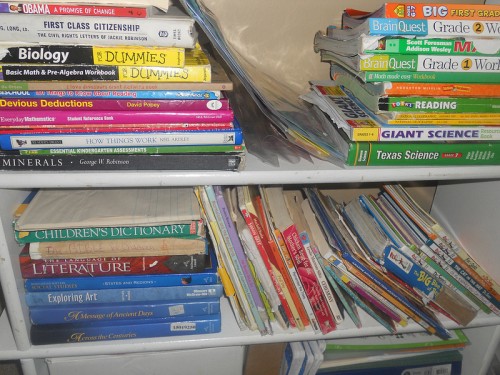For as long as systems of writing and formal schools have existed (whether for secular, religious, or other purposes), textbooks, in one form or another, have also existed: from clay tablets, scrolls, bound sheets of papyrus, vellum, and parchment to today’s modern mass-produced books.
The invention of the printing press provided the ability to mass-produce books and brochures in Europe. Following the patterns of European colonization, countries such as Singapore, India, USA and Latin American nations used the textbooks imported from the colonizing nations such as Great Britain. However, with independence, locally written textbooks began to be created to replace those originated in the colonizing nations.

How Textbooks Are Published
Let’s take the case of Singapore as an example. Singapore used to import textbooks from the UK until the 1970s, when the Ministry of Education (MOE) started to develop its own textbooks. In 1980, a department called Curriculum Development Institute of Singapore (CDIS) was set up and tasked with the development of textbooks at primary and secondary level. Since the mid-1990s, the development and publication of textbooks has also been decentralized. Like many countries in the world now, Singapore has laid the responsibilities of textbook production on private publishers.
While most governments do not participate in textbook publishing, they do play the important role of setting the curriculum. The Singapore mathematics curriculum framework, known as the pentagon framework, is communicated to publishers through curriculum briefings, seminars and meetings. Following that, textbook developers will start the publishing process. Editors produce the frameworks for the books, authors are invited to write on specific topics, manuscripts are developed and reviewed, and illustrators create graphics based on the manuscripts. Often, additional materials such as student workbooks, teacher’s guides, as well as multimedia resources are produced along the way.
Most importantly, the textbooks produced must be reviewed and approved by a government evaluation committee before they can be published and used in schools. Publishers then will have to convince schools (usually the principles and lead teachers) to adopt their textbooks.
The Problem with Today’s Textbooks
Despite the long reign of textbooks in modern education, concerns are now being raised over textbooks and their role in learning today.
1. Textbooks are outdated.
Textbooks are a core part of the curriculum, so one might assume they are conceived, researched, written, and published as unique contributions to advancing knowledge. However, most of these books fall short of expectations. After all, to publishers, the adoption of the textbooks only replies on a few key personnel’s decisions. In the article A Textbook Example of What’s Wrong with Education, Tamim Ansary, a former schoolbook editor, described the process of textbook publishing as a “Muddle Machine”.
They (textbooks) are processed into existence using the pulp of what already exists, rising like swamp things from the compost of the past. The mulch is turned and tended by many layers of editors who scrub it of anything possibly objectionable before it is fed into a government-run ‘adoption’ system that provides mediocre material to students of all ages.”
There is little innovation in the pedagogical ideas and teaching methodologies in the textbooks as a result of this process of textbook publishing. And due to the fact that only a few major publishers are dominant in the K-12 textbook publishing market (McGraw-Hill, Pearson and Houghton Mifflin Harcourt own about 85% of the K-12 core textbook market), the input of materials of this “Muddle Machine” comes only from these few providers.
2. Textbooks are not enough.
Recently, I’ve heard parents telling me their kids are not using textbooks that often, or that schools do not require them to use the textbooks. It leaves them wondering: How will classes be conducted without textbooks?
Thanks to technology, now teachers have more options other than textbooks for classroom teaching. PowerPoint is one of the most common tools used nowadays. Schools in more advanced countries also have IT labs to allow teachers to utilise interactive educational software. IT-savvy teachers may even produce their own customized teaching materials suited for their classes. All these contribute to the diminishing importance of the role of textbooks in modern education.
3. Textbooks are dull.
Compared with the interactivity and variety of content in multimedia, textbooks seem dry, simplistic and procedural. The IT-savvy generation will be more easily engaged by computers and mobile gadgets than paper textbooks. The element of interactivity seems more important than ever in education today. Although publishers are adding colourful diagrams and cute cartoon characters in their textbooks, that simply cannot compete with Google, Wikipedia, YouTube, and even games.
In my follow-up article, I share how digital textbooks are transforming the way we learn.